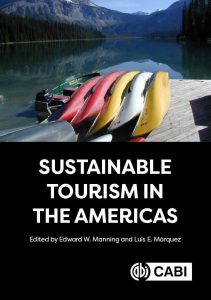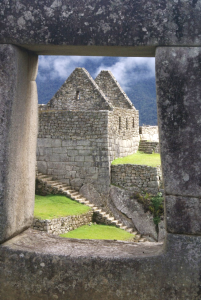11 January 2024 – Human beings have always travelled and even events like Covid-19 do not deter us for long. Tourism is now considered to be arguably the largest employer globally. It brings large concentrations of visitors to the most fragile sites and destinations across continents, so stressing limits.
I was the lead consultant to the UN on the development of indicators of sustainable tourism in the 1990s and I met my colleague Luis Marquez shortly after at one of our destination workshops. We shared projects on carrying capacity and tourism impacts which led to this work.
Over several decades I have worked in nearly all of the countries of the Western Hemisphere on projects to sustain communities, ecosystems and world heritage sites. Luis has had a similar path dealing with Latin American tourism and the establishment of sustainable destinations.
 In 2019 in response to our work throughout the Americas, Luis and I began work on Sustainable Tourism in the Americas, a book looking at how to make tourism sustainable. Our purpose was to identify the means to reduce impacts and find solutions to sustain the natural, cultural and economic base on which tourism in the Americas is built.
In 2019 in response to our work throughout the Americas, Luis and I began work on Sustainable Tourism in the Americas, a book looking at how to make tourism sustainable. Our purpose was to identify the means to reduce impacts and find solutions to sustain the natural, cultural and economic base on which tourism in the Americas is built.
We brought together authors from many countries across the Americas to share information on best practice in managing this sector and to provide success stories from all parts of North, Central and South America.
These country and regional case studies examine what tourism really means in each destination and the book looks at how in practice the concept of sustainability can be built to show results across different cultural and ecological situations ranging from local indigenous sites to fragile coasts, to urban environments. Cruise tourism and the role of tourism in environmental protection are also explored.
Examples include looking at managing carrying capacity within limits in San Miguel de Allende. Here I did a specific study to identify current stresses and a range of built and behavioral solutions for this very popular destination. This supported work to remove cars from the centre, redesign transportation, reschedule events and limit construction in the historic centre.
Projects were undertaken to manage remote and rural tourism in Guyana and Ecuador using participatory processes to identify the ecological capacity and the wishes of the community and to work with them to design tourism within the limits of acceptable change.
 One signal initiative was a major participatory planning project in Jasper in Canada’s Rocky Mountain parks which led to integrated conservation-based plans for both the urban center and the parks balancing the wishes of the tourists and the residents within the World Heritage Site.
One signal initiative was a major participatory planning project in Jasper in Canada’s Rocky Mountain parks which led to integrated conservation-based plans for both the urban center and the parks balancing the wishes of the tourists and the residents within the World Heritage Site.
The book has a section on certification of specific destinations and enterprises throughout the Americas based on standards for management, resource use, waste management, and integration with local communities. The cases on the Galapagos Islands and the Okanagan Valley are considered best practices for integrated tourism and ecological planning.
The aim is to share success stories and lessons on how tourism can be planned and managed among destinations and countries. The objective is to support destinations in sustaining their most important cultural and ecological assets in a rapidly expanding tourism industry which stresses many of the limits locally and globally.
We examine questions such as ‘what is really meant by sustainable tourism’ and relate it to the recent development of criteria and indicators via the UN World Tourism Organization and new standards from the Global Sustainable Tourism Council.
Our work has taken nearly four years to publish, impeded by Covid-19 and the need for many of the authors to change countries due to the closure of jobs or to civil strife and the need to migrate for work. The objective of this work has been to help travelers to live within ecological, sociological and economic limits while working in harmony with the places they visit to sustain and restore the wellbeing of all destinations.
Sustainable Tourism in the Americas is available in English and Spanish from CABI at: https://www.cabidigitallibrary.org/doi/book/10.1079/9781800623217.0000
Photos: Emerald Lake BC Canada, Nelsons Dockyard Antigua, Machu Picchu Peru, Sitka Alaska
All photos copyright Edward Manning Tourisk Inc.






